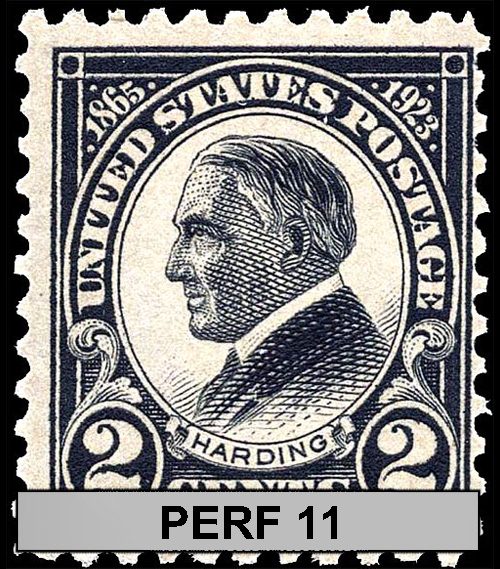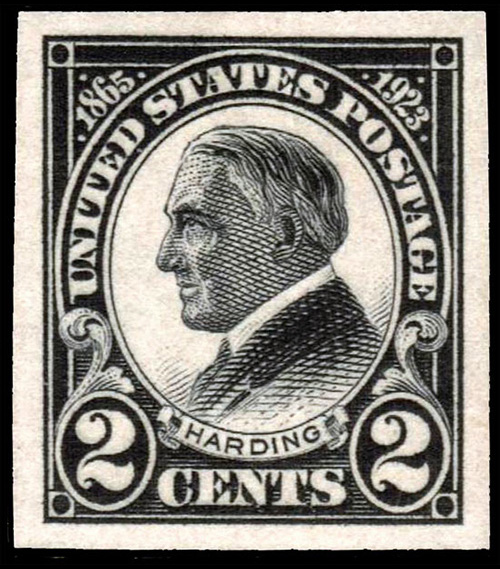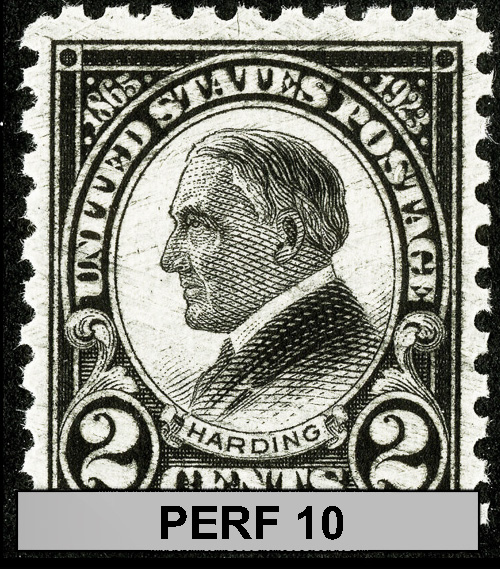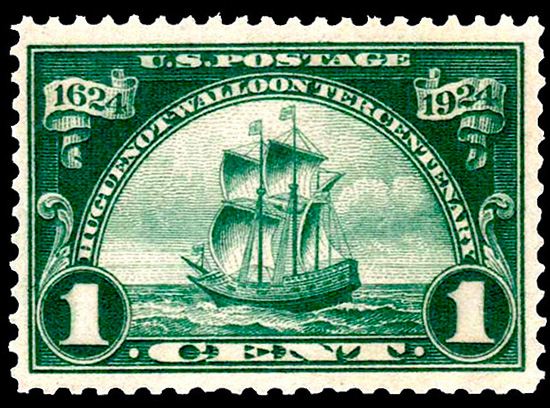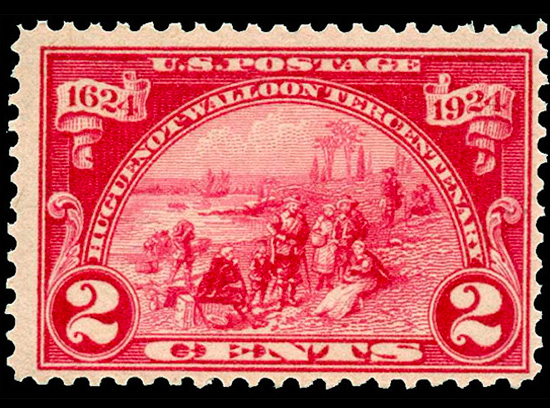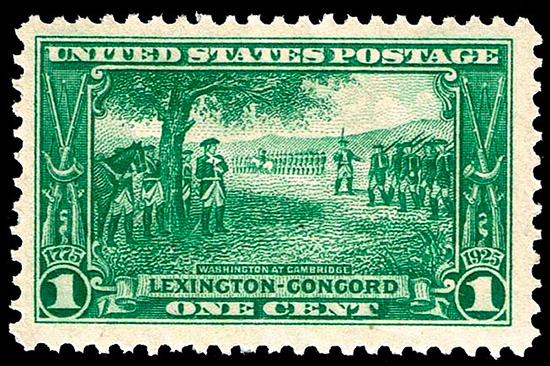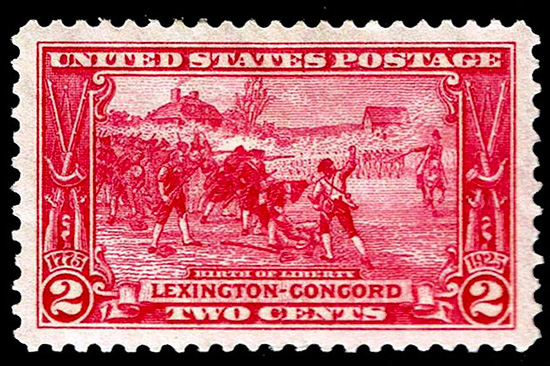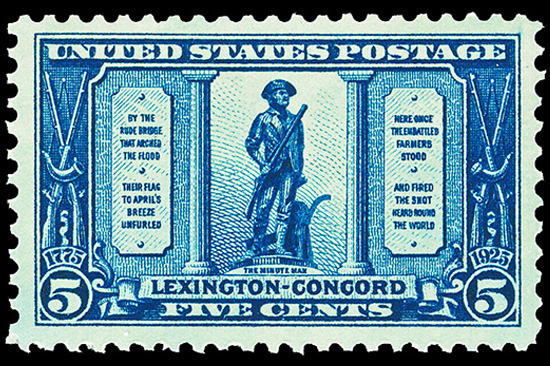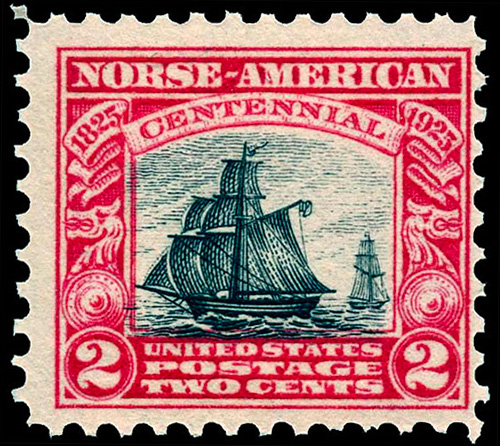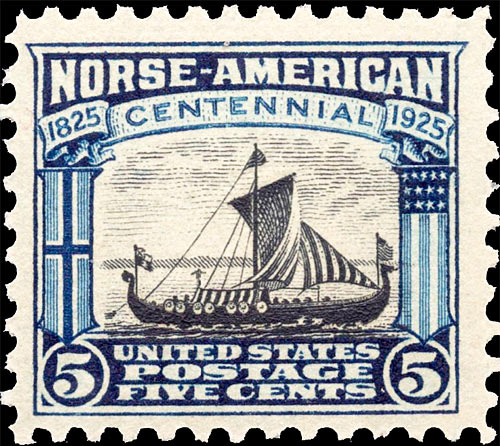Basic Info
2¢ - Grey black, black, intense black
Printing Method: FLAT PLATE (see below)
Subject: Warren G. Harding
Number issued: 1,500,000,000
Perforations: 11
Watermark: Unwatermarked
Scott #: 610
Issued: September 1st, 1923
#610 Value
Used
10¢
No postmark with gum (MH)
25¢ - 50¢
Full perfect gum, no postmark
no trace of stamp hinge mark (MNH)
$1 - $2
#610a
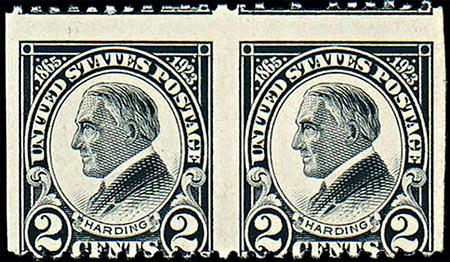
#610a horizontal pair with imperf between two stamps.
Only one pane of 100 had this variety.
#610a Value
Used
No recorded sales
No postmark with gum (MH)
$800 - $950
Full perfect gum, no postmark
no trace of stamp hinge mark (MNH)
$900 - $1,000
#610b
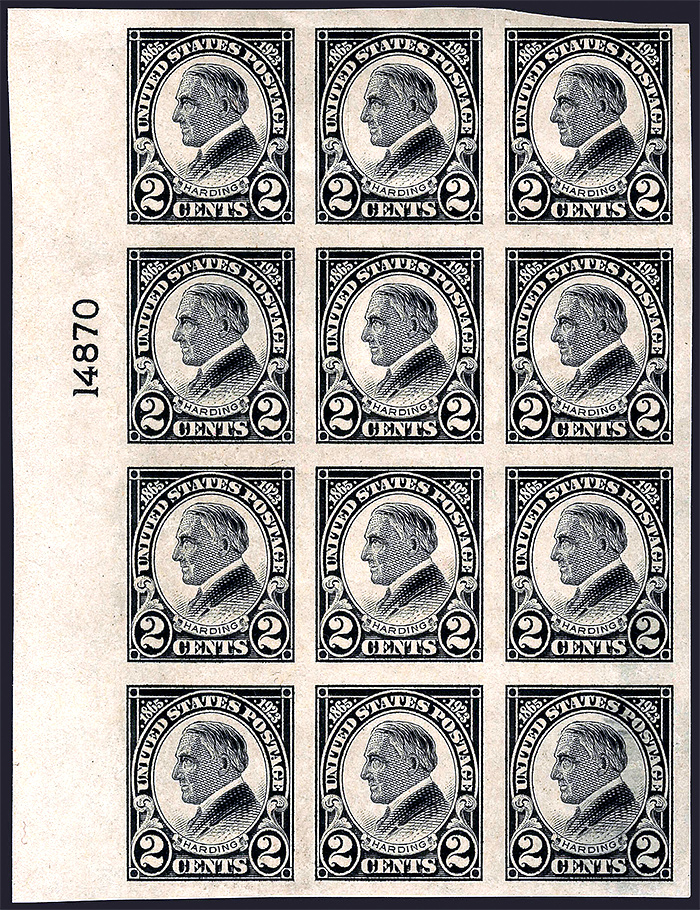
#610b imperforate
Not to be confused with #611 the imperforate issue. There was one sheet of #610 that was printed without perforations, that being plate #14870. To distinguish this error printing from #611 any example should show the plate number as seen above.
#610 Plate #'s

#610 was issued with the following plate #'s
14852-63, 68-79, 84-99
14902-09, 40-43, 46-49, 54-56, 72, 87-94, 97-99
15000-12, 17-20, 25-32, 35-42, 53-68, 77-84, 89-92, 97-99
15100-22, 29-31
A Mourning Stamp
President Warren Harding died in office after a short illness. He is generally considered as one of the worst US Presidents. In normal circumstances, his death would not be commemorated on a stamp, indeed not so soon after his demise. After all, the last such mourning stamp was the 1866 Lincoln 15¢ issued some years after his death. The Lincoln mourning stamp was also printed in black. But Mr. New, the Postmaster General at the time, was a friend of the late Warren Harding, and he wanted a mourning stamp for him.
#613 was created when a sheet of the rotary press stamps was fed through the flat plate (Gauge 11) perforator
The portrait used was Harding's favorite, taken just before his death. The stamp proved to be very popular. So much so that the print run was doubled and the time on sale extended. Still, the Bureau could not keep up with demand. The flat plate presses worked to the max, and shortages occurred. So for the first time, a commemorative stamp was printed in both flat plate and rotary press as the latter was employed to assist in production.
An imperforate stamp was also sold. The reason was not for postage; it was for folks who wanted to display sheets of 100 stamps in a frame to celebrate Harding.
First day cover
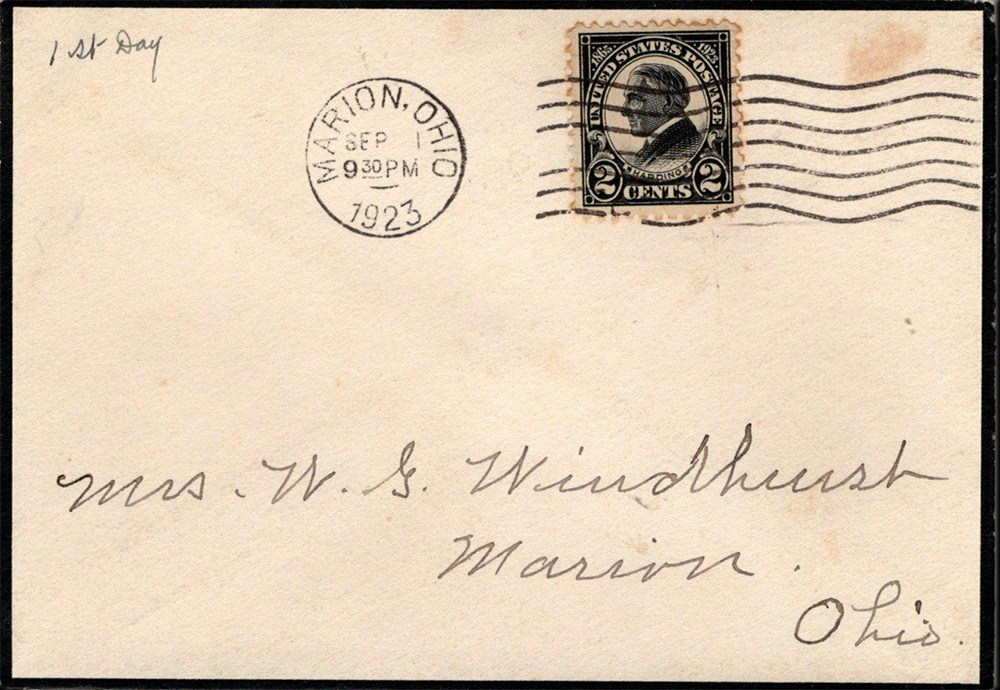
A first day cover of #610, September 1st, 1923. Issued in Marion, Ohio, birthplace of Warren Harding. The envelope is edged in black for mourning.
The design inspiration

The source photograph of Warren G. Harding, used in the vignette
Proofs

A die proof of Warren Harding
Vertically Imperforated
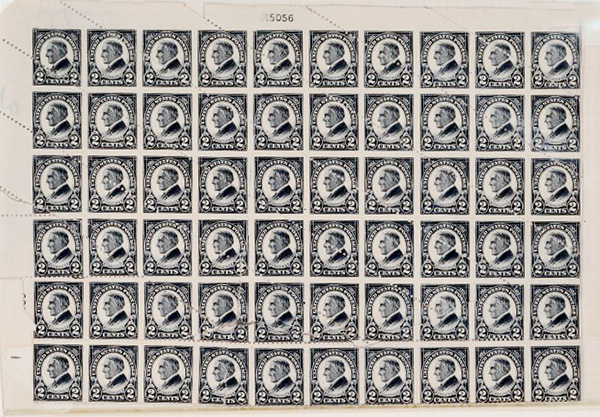
A block of sixty with vertical imperforate stamps
Flat Plate or Rotary Press?
As the curved plates of the Rotary press made the stamps slightly larger it is relatively easy to discern which stamp is flat plate and which is a rotary press stamp. First select any perf Washington Franklin stamp or the first issue Washington Franklin 1 cent or 2 cent. These are the stamps with the numbers one and two spelt out, instead of numbers being displayed. I chose the latter alternative as shown in the first image above.
Then cut out squares at each corner. As shown in the second image above. Placing the stamp you wish to test under your cut out stamp you can see if the frame lines match. If, as in the last image shown above the frame lines are outside the top stamp in either the top, bottom or sides then you have a rotary stamp. If the lines are in the same place, as shown in the third image, you have a flat plate stamp.
This test works with any value stamp.
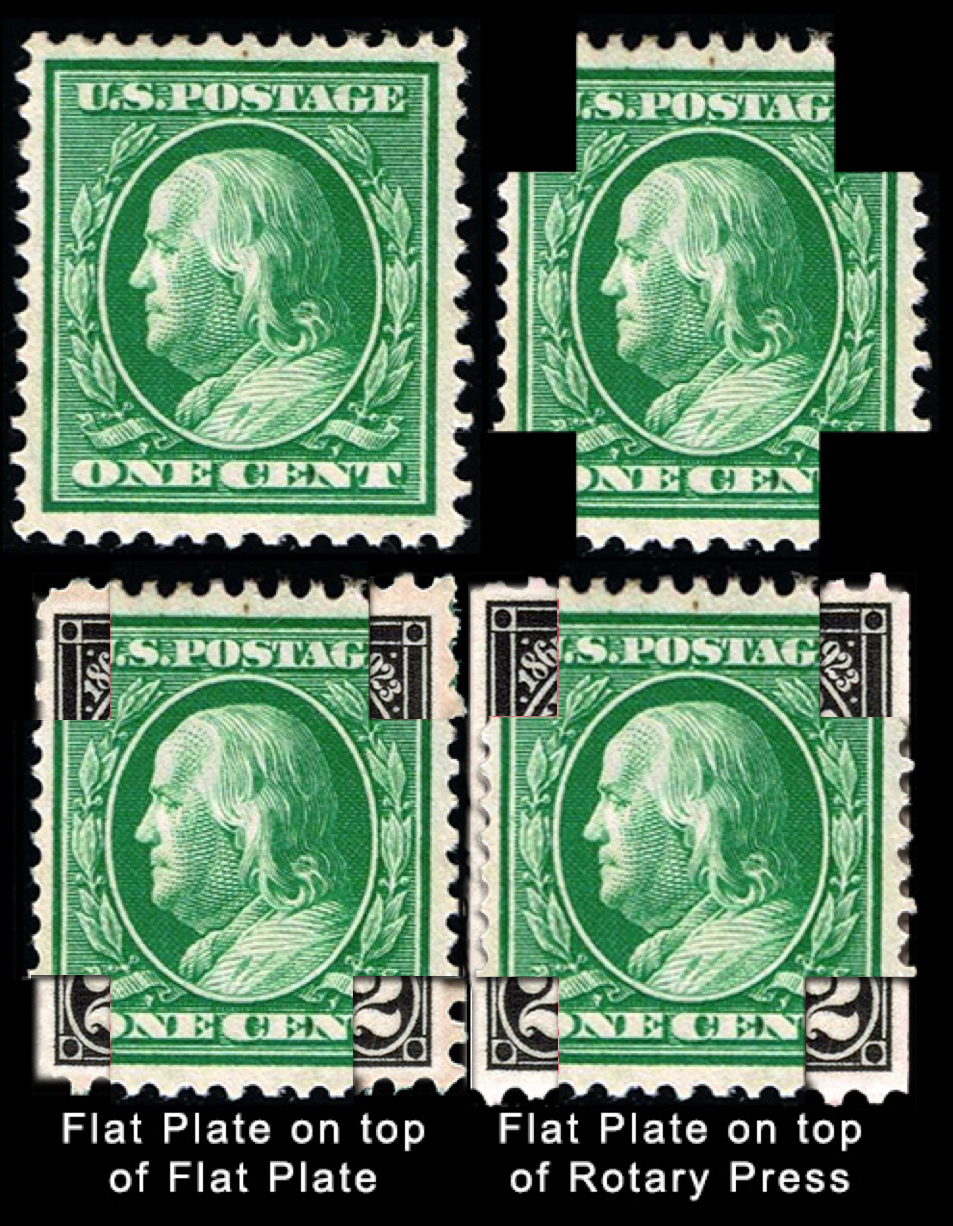
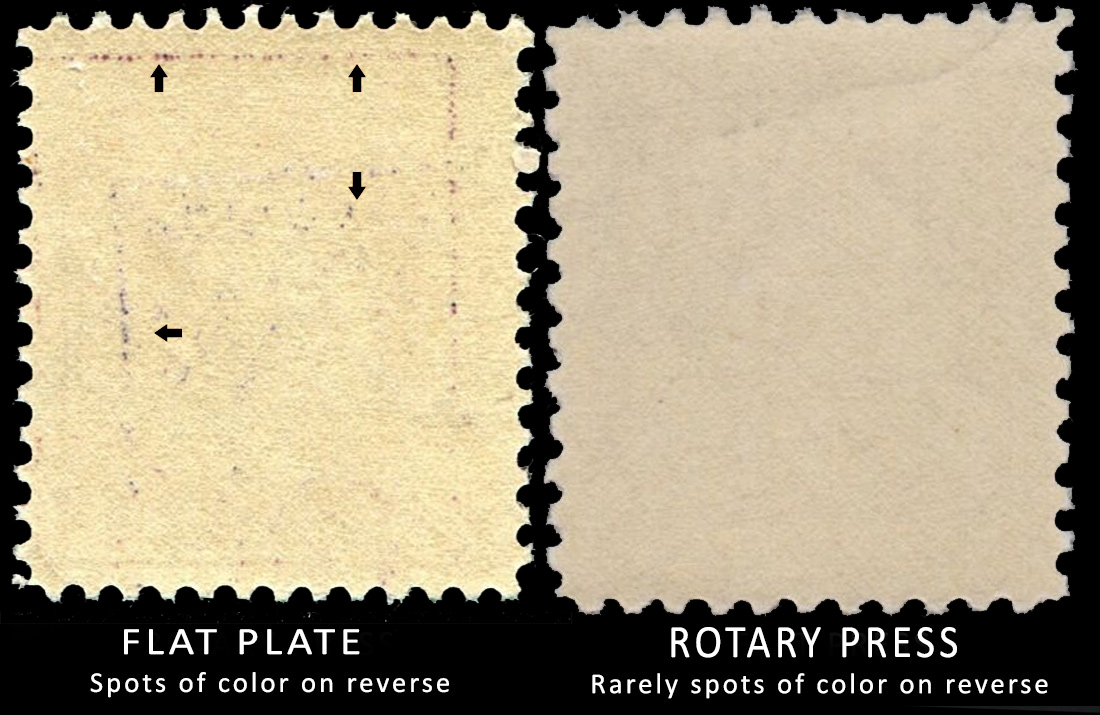
The image above left is a perfect example of the reverse of a flat plate stamp. The flecks of ink on the reverse can be found on flat plate stamps and are rare on rotary press stamps. The cause of the flecks of ink is that during the flat plate process the sheets were placed on top of each other before the ink had a chance to dry properly.

